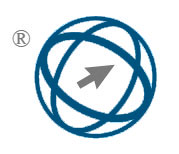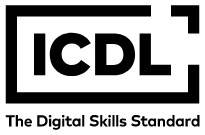Ensemble Machine Learning Algor ithms for Predicting Thyroid Disorders in Diabetic Patients: A Comparative Analysis
Abstract
Thyroid diseases represent a significant health challenge due to their high prevalence and complex interactions with other diseases, negatively impacting quality of life and increasing the cost and complexity of treatment. Machine learning techniques have proven effective in medical applications, particularly in enhancing diagnostic accuracy and predictive performance. This study aims to develop an early prediction application for thyroid disorders in diabetic patients by comparing individual machine learning models—Decision Tree (DT), K-Nearest Neighbors (KNN), Gaussian Naïve Bayes (GNB), Support Vector Machine (SVM), and Logistic Regression (LR)—with ensemble learning models, including Random Forest (RF), Voting, Bagging, AdaBoost, Gradient Boosting, and Stacking. The results demonstrated that the Support Vector Machine (SVM) model outperformed other base models, achieving an accuracy of 97%, a precision of 93%, and sensitivity and specificity of 85% each. The K-Nearest Neighbors (KNN) model achieved an accuracy of 97%, a precision of 91%, and sensitivity and specificity of 83% each. Similarly, the Logistic Regression (LR) model achieved an accuracy of 97%, a precision of 90%, and sensitivity and specificity of 84% each. Among the ensemble methods, the Gradient Boosting method achieved the highest performance, with an accuracy of 97%, a precision of 92%, and sensitivity and specificity of 88% each. The Voting model achieved an accuracy of 97%, a precision of 92%, and sensitivity and specificity of 87% each. The Random Forest (RF) model achieved an accuracy of 97%, a precision of 89%, and sensitivity and specificity of 88% each. The significance of this study lies in early prediction of thyroid disorders in diabetic patients. We recommend the use of ensemble learning models due to their effectiveness in early diagnosis and prediction of pathological conditions as part of a computer-based medical diagnostic system.
Full Text:
PDFReferences
S. Ghimire, P. Sangroula, I. K.C., R. K. Deo, S. Ghimire, and K. Dhonju, "Spectrum of Thyroid Disorders in Patients with Type-2 Diabetes Mellitus," J Nepal Health Res Counc, vol. 20, no. 4, pp. 922–927, Jul. 2023, doi: 10.33314/jnhrc.v20i4.4314.
M. Hage, M. S. Zantout, and S. T. Azar, "Thyroid Disorders and Diabetes Mellitus," Journal of Thyroid Reseach-SAGE, vol. 2011, p. 7, 2011.
H. Y. Abdulrazaq, I. A. Zaboon, and M. A. Maatook, "Prevalence of thyroid disorders among diabetes mellitus patients in al-Basra southern of Iraq," ATMPH, vol. 24, no. 04, 2021, doi: 10.36295/ASRO.2021.24462.
P. Sharma, S. Shrestha, and P. Kumar, "A review on association between diabetes and thyroid disease," SUJHS, vol. 5, no. 2, pp. 50–55, Jan. 2020, doi: 10.18231/j.sujhs.2019.013.
D. Das, "Essentiality, relevance, and efficacy of adjuvant/combinational therapy in the management of thyroid dysfunctions," 2022.
Q. Wang, Z. Zeng, J. Nan, Y. Zheng, and H. Liu, "Cause of Death Among Patients With Thyroid Cancer: A Population-Based Study," Front. Oncol., vol. 12, p. 852347, Mar. 2022, doi: 10.3389/fonc.2022.852347.
M. H. Alshayeji, "Early Thyroid Risk Prediction by Data Mining and Ensemble Classifiers," MAKE, vol. 5, no. 3, pp. 1195–1213, Sep. 2023, doi: 10.3390/make5030061.
A. A. Alsolami et al., "Association between type 2 diabetes mellitus and hypothyroidism: a case–control study," IJGM, vol. Volume 11, pp. 457–461, Dec. 2018, doi: 10.2147/IJGM.S179205.
A. M. Rahmani et al., "Machine Learning (ML) in Medicine: Review, Applications, and Challenges," Mathematics, vol. 9, no. 22, p. 2970, Nov. 2021, doi: 10.3390/math9222970.
American Diabetes Association Professional Practice Committee, "6. Glycemic Targets: Standards of Medical Care in Diabetes—2022," Diabetes Care, vol. 45, no. Supplement_1, pp. S83–S96, Jan. 2022, doi: 10.2337/dc22-S006.
American Diabetes Association, "Diagnosis and Classification of Diabetes Mellitus," Diabetes Care, vol. 32, no. Supplement_1, pp. S62–S67, Jan. 2009, doi: 10.2337/dc09-S062.
K. Abnoosian, R. Farnoosh, and M. H. Behzadi, "Prediction of diabetes disease using an ensemble of machine learning multi-classifier models," BMC Bioinformatics, vol. 24, no. 1, p. 337, Sep. 2023, doi: 10.1186/s12859-023-05465-z.
A. Raza, F. Eid, E. C. Montero, I. D. Noya, and I. Ashraf, "Enhanced interpretable thyroid disease diagnosis by leveraging synthetic oversampling and machine learning models," BMC Med Inform Decis Mak, vol. 24, no. 1, p. 364, Nov. 2024, doi: 10.1186/s12911-024-02780-0.
E. S. Tumpa and K. Dey, "A Review on Applications of Machine Learning in Healthcare," in 2022 6th International Conference on Trends in Electronics and Informatics (ICOEI), Tirunelveli, India: IEEE, Apr. 2022, pp. 1388–1392. doi: 10.1109/ICOEI53556.2022.9776844.
G. Kunapuli, Ensemble Methods for Machine Learning.
M. Saleem, M. Zaman, and A. Rasool, "Improving Classification Accuracy of Machine Learning Algorithms for Thyroid Prediction using Ensemble Models," International Conference on Innovations in Applied Science and Engineering, 2022, doi: doi: https://doi.org/107926504/thumbnails/1.
H. O. Sayyid, S. A. Mahmood, and S. S. Hamadi, “A Comparative Analysis of Machine Learning Models for Predicting Thyroid Disorders in Type 1 and Type 2 Diabetic Patients,” J. Basrah Res. (Sci.), vol. 50, no. 2, pp. 193–203, Dec. 2024, doi: 10.56714/bjrs.50.2.16.
K. Salman and E. Sonuç, "Thyroid Disease Classification Using Machine Learning Algorithms," J. Phys.: Conf. Ser., vol. 1963, no. 1, p. 012140, Jul. 2021, doi: 10.1088/1742-6596/1963/1/012140.
R. Chaganti, F. Rustam, I. De La Torre Díez, J. L. V. Mazón, C. L. Rodríguez, and I. Ashraf, "Thyroid Disease Prediction Using Selective Features and Machine Learning Techniques," Cancers, vol. 14, no. 16, p. 3914, Aug. 2022, doi: 10.3390/cancers14163914.
T. Akhtar et al., "Ensemble-based Effective Diagnosis of Thyroid Disorder with Various Feature Selection Techniques.," 2022 2nd International Conference of Smart Systems and Emerging Technologies (SMARTTECH), pp. 14–19, 2022, doi: https://doi.org/10.1109/smarttech54121.2022.00019.
M. H. Alshayeji, "Early Thyroid Risk Prediction by Data Mining and Ensemble Classifiers," MAKE, vol. 5, no. 3, pp. 1195–1213, Sep. 2023, doi: 10.3390/make5030061.
A. Raza, F. Eid, E. C. Montero, I. D. Noya, and I. Ashraf, "Enhanced interpretable thyroid disease diagnosis by leveraging synthetic oversampling and machine learning models," BMC Med Inform Decis Mak, vol. 24, no. 1, p. 364, Nov. 2024, doi: 10.1186/s12911-024-02780-0.
M. S. Mir, S. A. Fayaz, M. Zaman, and S. Agrawal, "An Application of Traditional and Ensemble Machine Learning Approaches to Redefine Thyroid Disorder Diagnosis," MMEP, vol. 11, no. 9, pp. 2437–2446, Sep. 2024, doi: 10.18280/mmep.110916.
S. Ji, "SSC: The novel self-stack ensemble model for thyroid disease prediction," PLoS ONE, vol. 19, no. 1, p. e0295501, Jan. 2024, doi: 10.1371/journal.pone.0295501.
P. Gupta et al., "Detecting Thyroid Disease Using Optimized Machine Learning Model Based on Differential Evolution," Int J Comput Intell Syst, vol. 17, no. 1, p. 3, Jan. 2024, doi: 10.1007/s44196-023-00388-2.
P. Sanju, N. S. S. Ahmed, P. Ramachandran, P. M. Sajid, and R. Jayanthi, "Enhancing thyroid disease prediction and comorbidity management through advanced machine learning frameworks," Clinical eHealth, vol. 8, pp. 7–16, Dec. 2025, doi: 10.1016/j.ceh.2025.01.002.
R. Islam, A. Sultana, and Md. N. Tuhin, "A comparative analysis of machine learning algorithms with tree-structured parzen estimator for liver disease prediction," Healthcare Analytics, vol. 6, p. 100358, Dec. 2024, doi: 10.1016/j.health.2024.100358.
B. AYINDE, "Thyroid Sickness Determination." 2022. [Online]. Available: https://www. kaggle.com/datasets/bidemiayinde/thyroid-sickness-determination
A. Géron, Hands-on Machine Learning with Scikit-Learn, Keras & TensorFlow. canada: O'Reilly Media, Inc., 1005 Gravenstein Highway North, Sebastopol, CA 95472., 2019.
T. Fawcett, "Introduction to ROC analysis," Pattern Recognition Letters, vol. 27, pp. 861–874, 2006, doi: DOI: 10.1016/j.patrec.2005.10.010 ·.
DOI: https://doi.org/10.31449/inf.v49i24.8373

This work is licensed under a Creative Commons Attribution 3.0 License.









